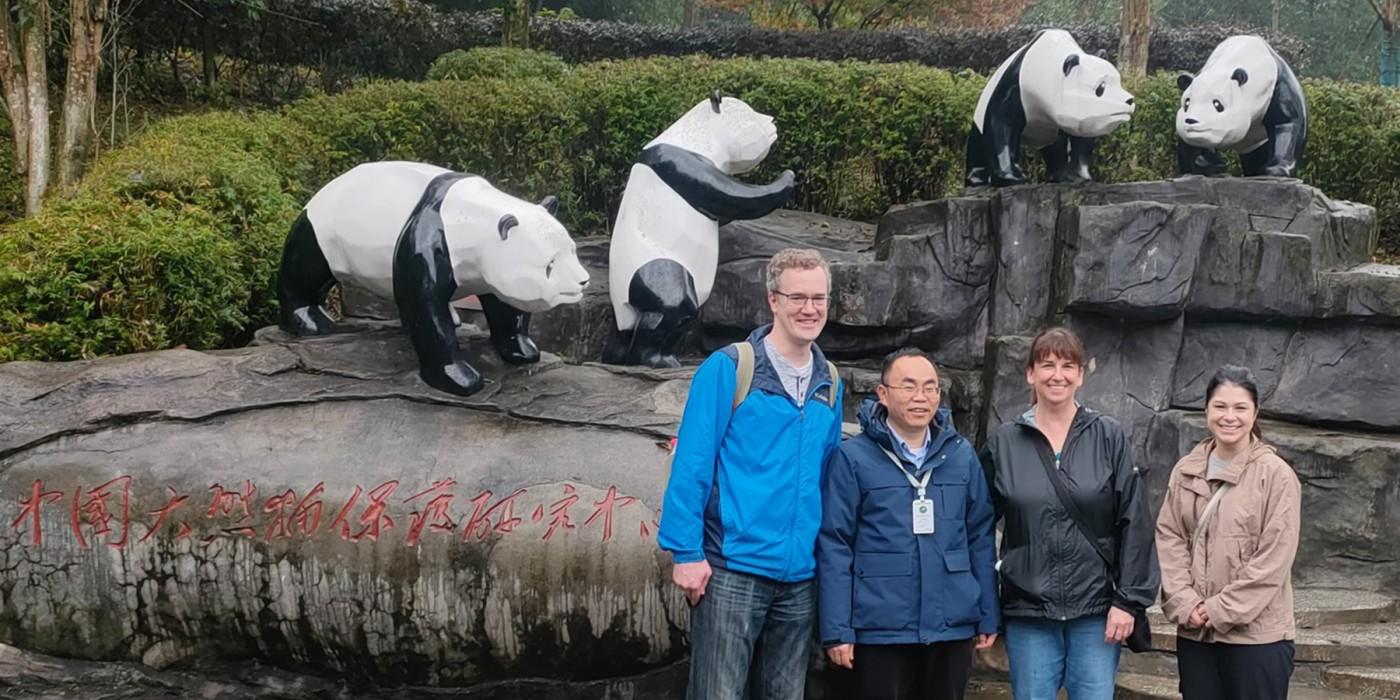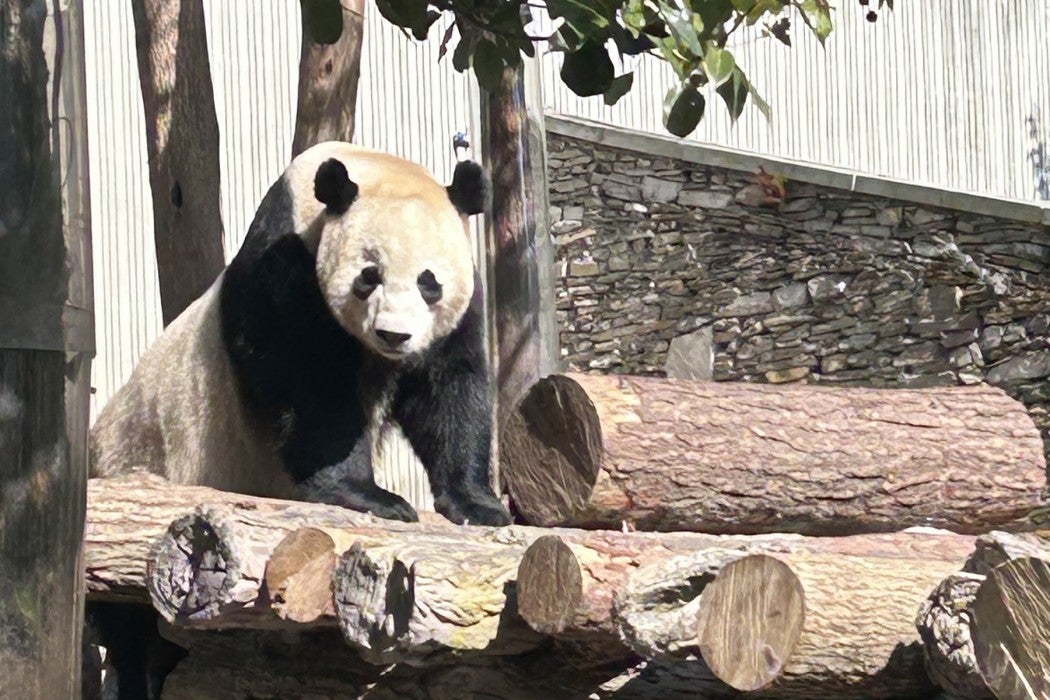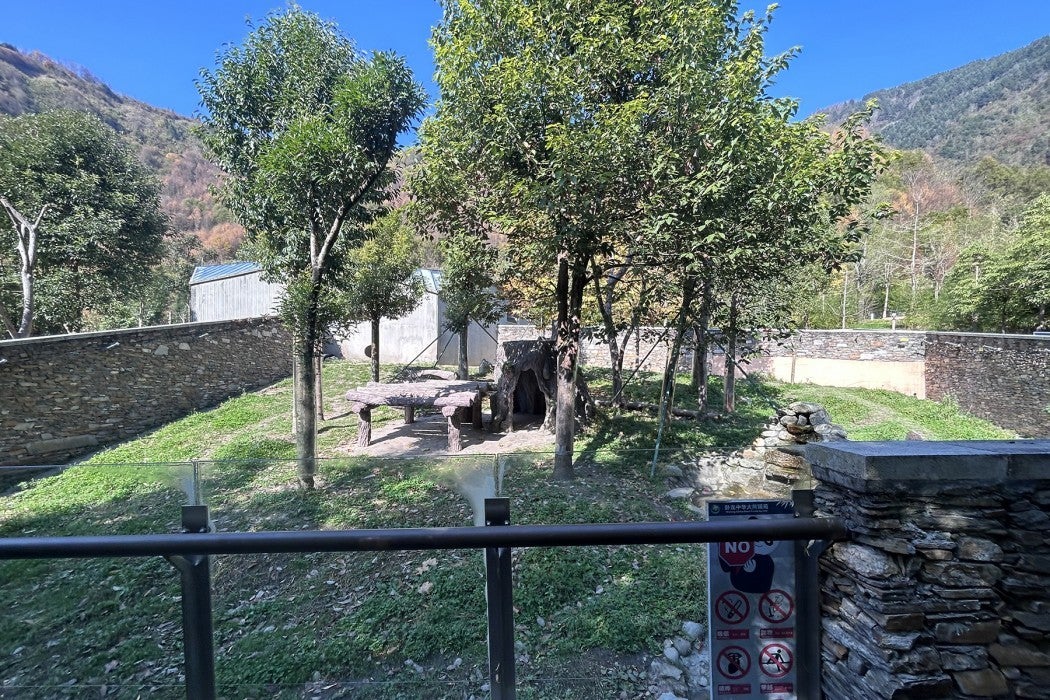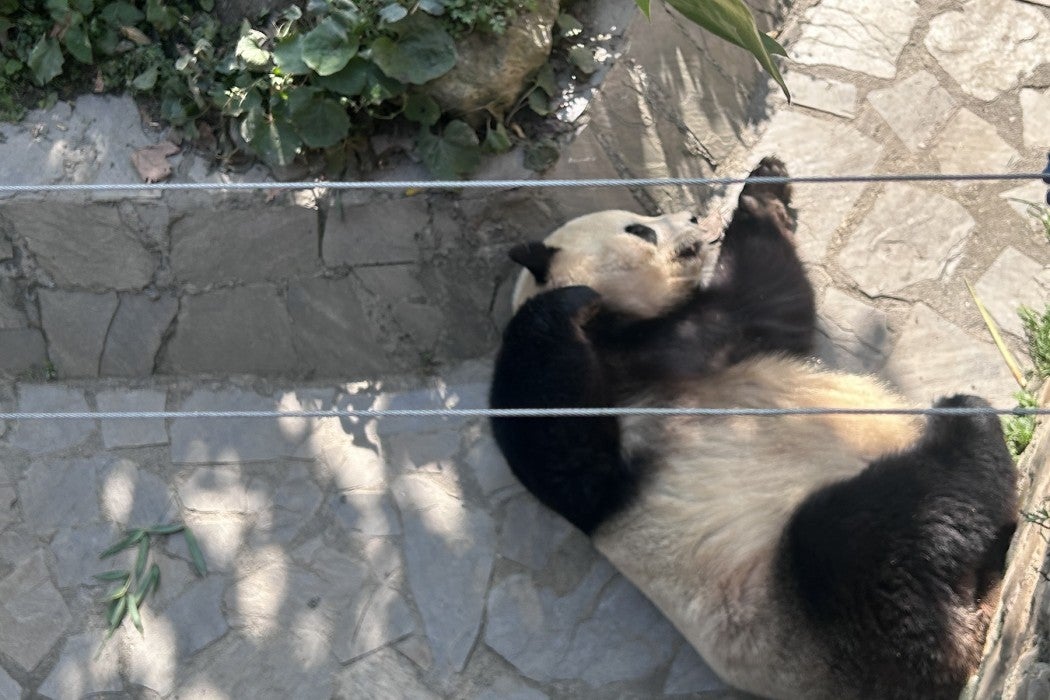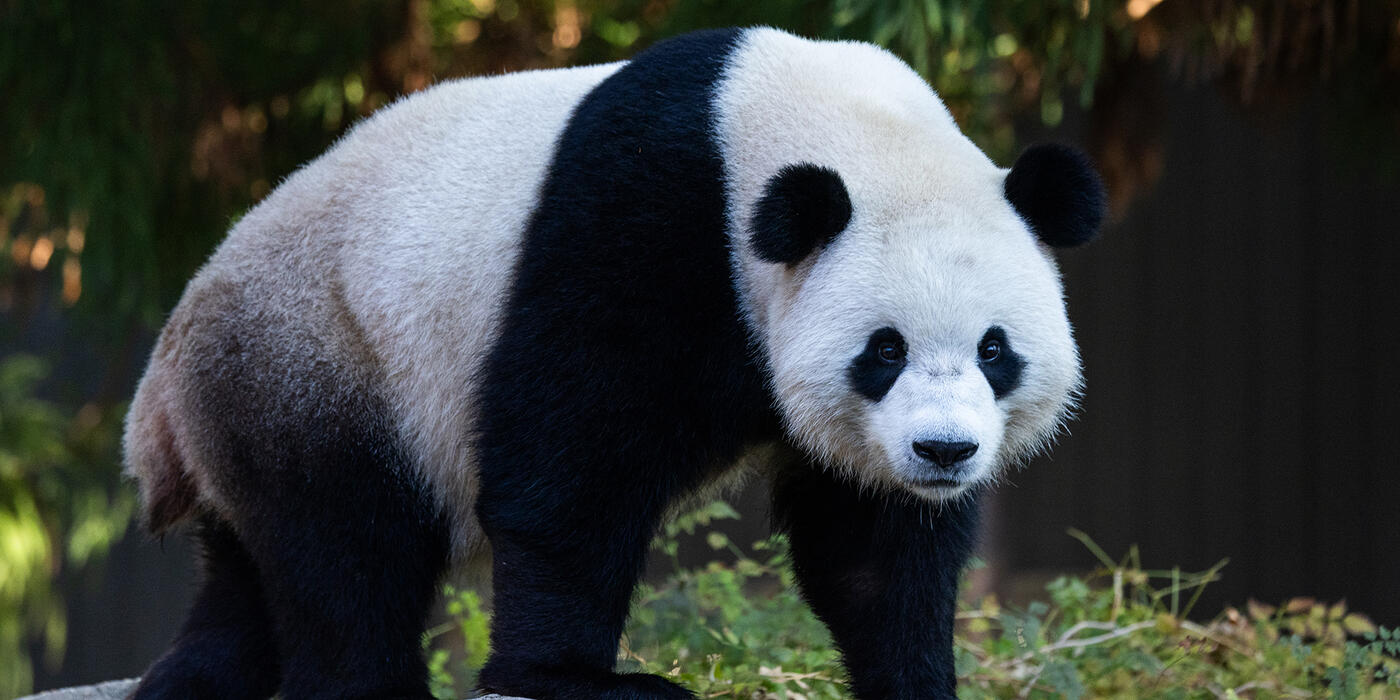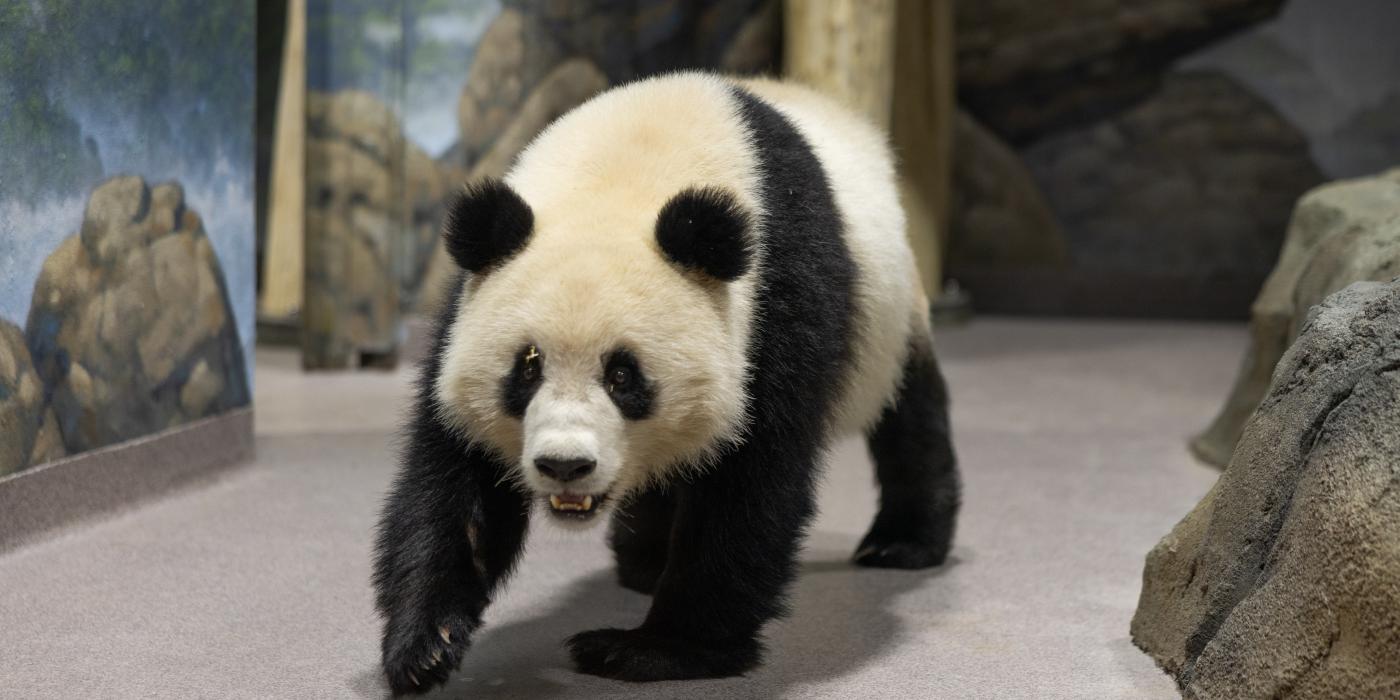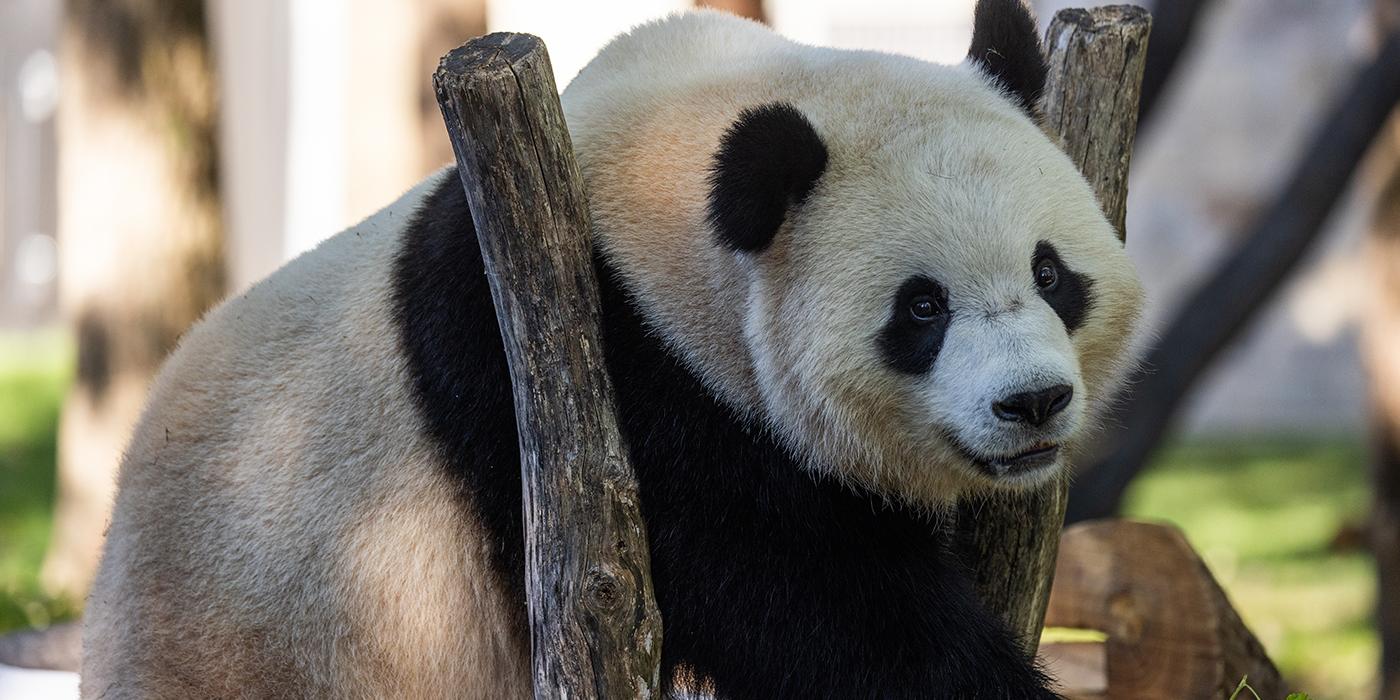#PandaStory: A Happy Homecoming
Giant pandas Tian Tian, Mei Xiang and Xiao Qi Ji are settling in nicely in their new home at the China Conservation and Research Center for the Giant Panda’s ShenShuPing Campus. Assistant curator Laurie Thompson, veterinarian James Steeil and keeper Mariel Lally share some of their favorite memories from their trip in this Q+A.
How did the pandas fare on the FedEx Panda Express?
Lally: Throughout the plane ride, all three giant pandas slept and ate bamboo, biscuits and produce. Tian Tian was not a fan of turbulence, but luckily the flight was mostly smooth. With some keeper attention, he quickly settled back down. Mei Xiang was in the crate furthest away from the cargo entry door, which just so happened to be closest to the food. She spent a lot of time resting, but when she was awake, she kept an eye out for her next meal. Xiao Qi Ji’s crate was closest to the cargo door. He perked up when he heard us coming as if he knew that seeing us meant treats would come his way.
Steeil: Overall, all three pandas were real troopers through this transition. Their response to this type of transfer met all our expectations.
At the airport in Chengdu, the pandas were safely unloaded in their specialized travel crates. Our veterinarian shared this video of the pandas disembarking. The pandas’ new keepers from the China Conservation and Research Center for the Giant Panda met them on the tarmac and drove them to ShenShuPing Campus in Wolong.
How did they react to their new home?
Lally: Whenever animals are shipped from one facility to another, there is always a little bit of nervousness — there are so many new sights, sounds, smells and people. All three pandas took their time exiting their crates and slowly maneuvering around their quarantine enclosures. Laidback as always, Tian Tian was the first to settle in and eat some bamboo. Mei Xiang and Xiao Qi Ji took a little more time to feel comfortable enough to eat, which is completely normal and expected animal behavior — especially for Mei Xiang and Xiao Qi Ji’s cautious nature.
Steeil: Like most quarantine areas, the size of the enclosure is slightly smaller than what they are used to, but overall will work well while they settle in.
Lally: After quarantine ends, they will be moved elsewhere to larger exhibits that are like our habitats at the Zoo. However, in quarantine they have both indoor and outdoor access with lots of fresh bamboo, bamboo shoots and produce. Their indoor enclosure also has a great setup for training with their new keepers, including a blood draw sleeve.
Video courtesy of the China Conservation and Research Center for the Giant Panda.
What did you discuss with the pandas’ new animal care team?
Thompson: At the China Conservation and Research Center for the Giant Panda, we met with the keepers and veterinarians and talked about the pandas’ individual personalities and behaviors, what special foods they most enjoyed and how they adapt to new situations. Mariel and I told them about the husbandry and medical behaviors that Tian Tian, Mei Xiang and Xiao Qi Ji are trained to do voluntarily.
Steeil: We also discussed Tian Tian and Mei Xiang’s ailments — arthritis, hypertension and ascites — as well as their medications and treatments. We told the staff that the pandas were trained to receive photobiomodulation (laser) therapy treatment and reviewed the protocols for this treatment with them.
Overall, how would you say they are adjusting to life in China?
Thompson: They are doing very well and have even begun training sessions with their new keepers.
What was your favorite memory from the trip?
Lally: When we first arrived at the China Conservation and Research Center for the Giant Panda, we were able to visit Tian Tian, Mei Xiang and Xiao Qi Ji a few minutes after they were unloaded from their crates. Per quarantine protocol, we had to wear personal protective equipment (PPE), which included full body covering, mask and gloves, so the pandas were not able to visually identify us or smell us like they are used to. However, I crouched down by the mesh and began talking to Xiao Qi Ji. He seemed to recognize my voice and came over to me! He rubbed his head on the mesh near my hand before continuing to investigate his space.
Steeil: Although it is bittersweet to close this chapter in our giant panda care and conservation program, it was clear that all of the great work we have done for this species has made a positive impact in China. There were multiple instances where visitors at the Center shook our hands and expressed how happy they were to see us and the pandas.
Thompson: When we found out the pandas would be leaving, I knew I had to go with them. I was there when Tian Tian and Mei Xiang arrived in 2000, and I wanted to be there to take them home. I am so grateful to have had these last 23 years with them, and I am very proud of the care we gave them. It was great to bring them home to Mr. Huang, who brought them to us in 2000! It was a full circle moment.
Assistant curator of giant pandas Laurie Thompson took this video of Bao Bao and her son, Bao Li, enjoying bamboo shoots in China.
What do you hope the future holds for Xiao Qi Ji?
Lally: Xiao Qi Ji’s future is going to be incredible! It will be filled with lots of bamboo shoots, climbing trees and other fun structures, and, ultimately, contributing to the conservation of giant pandas when the time comes for him to join the breeding program. If I have the opportunity to go back to China, I hope that I will see him playing in his habitat and maybe perk up his ears if he hears me talking!
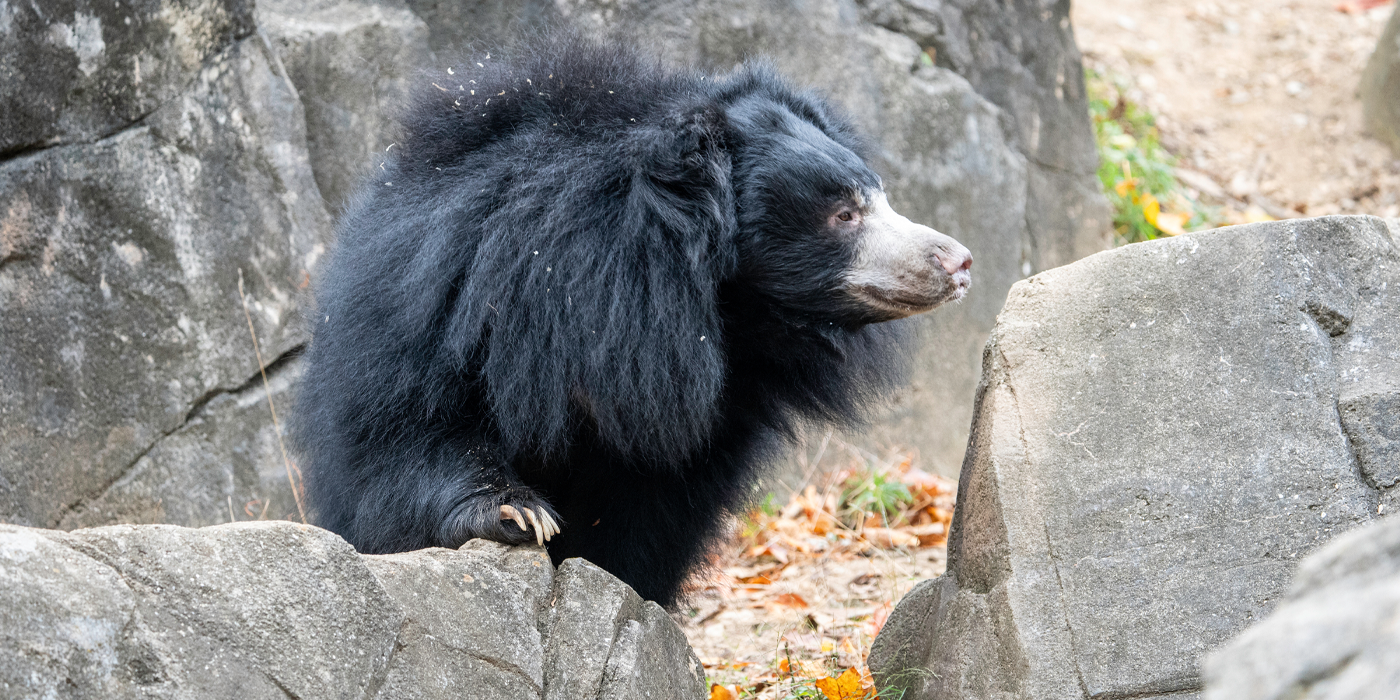
Meet Vicki, our new sloth bear, on Asia Trail!
What are you most looking forward to about working with the other animals on Asia Trail?
Lally: I am excited to spend more time with our three sloth bears, Niko, Deemak and Vicki. It has been a few years since we have had a female sloth bear, and Vicki has a breeding recommendation with both males. Fingers crossed for sloth bear cubs in the future!
Thompson: I will continue to work with the red pandas and snakehead fish, but will now be concentrating on other assistant curator duties for Asia Trail, including the habitat renovations taking place inside the Panda House. I hope we will have giant pandas again soon!
This story appears in the Dec. 1 Giant Panda Bulletin and marks the final issue of this e-newsletter. Thank you for following our #PandaStory. We are grateful for your decades of support.

